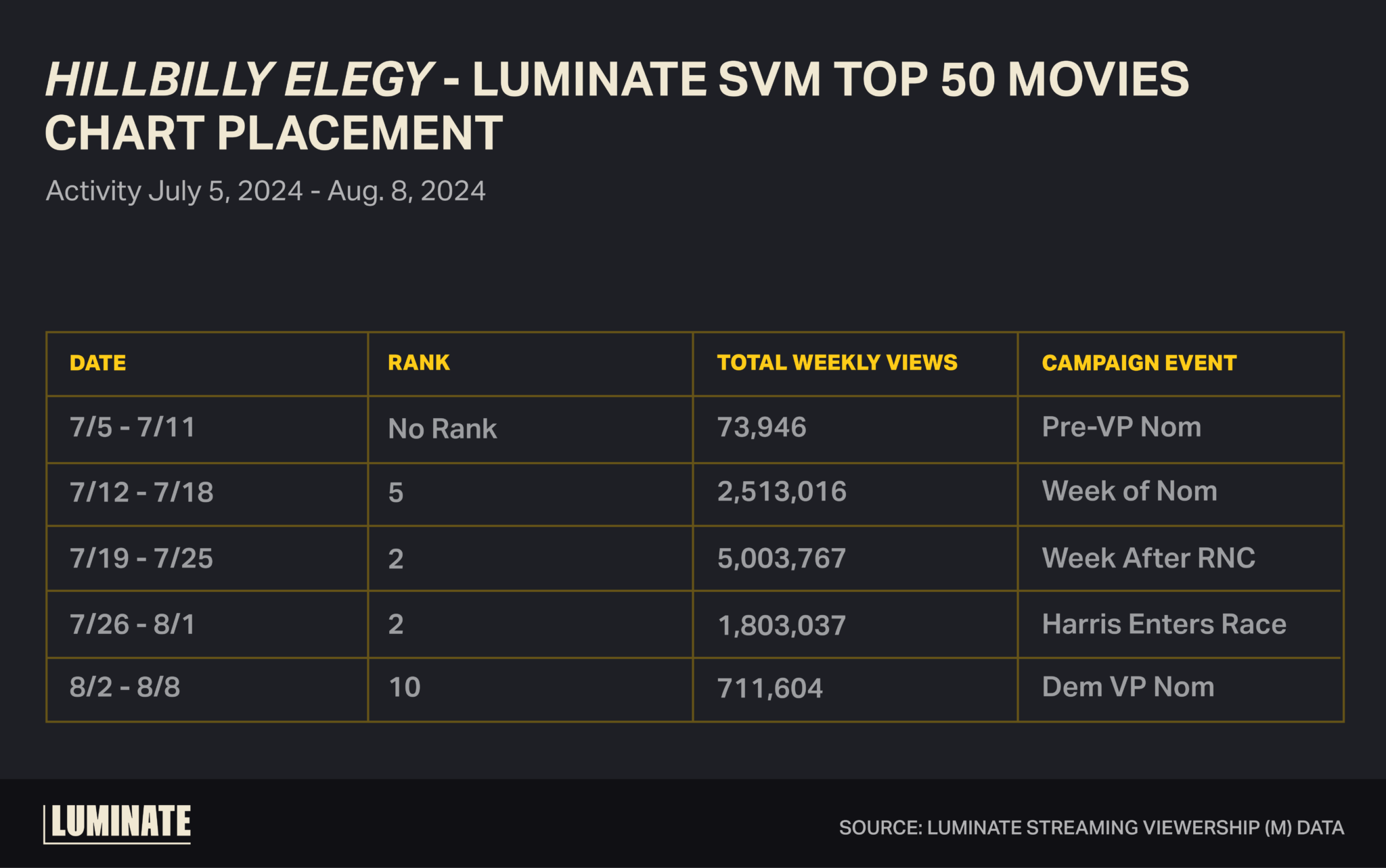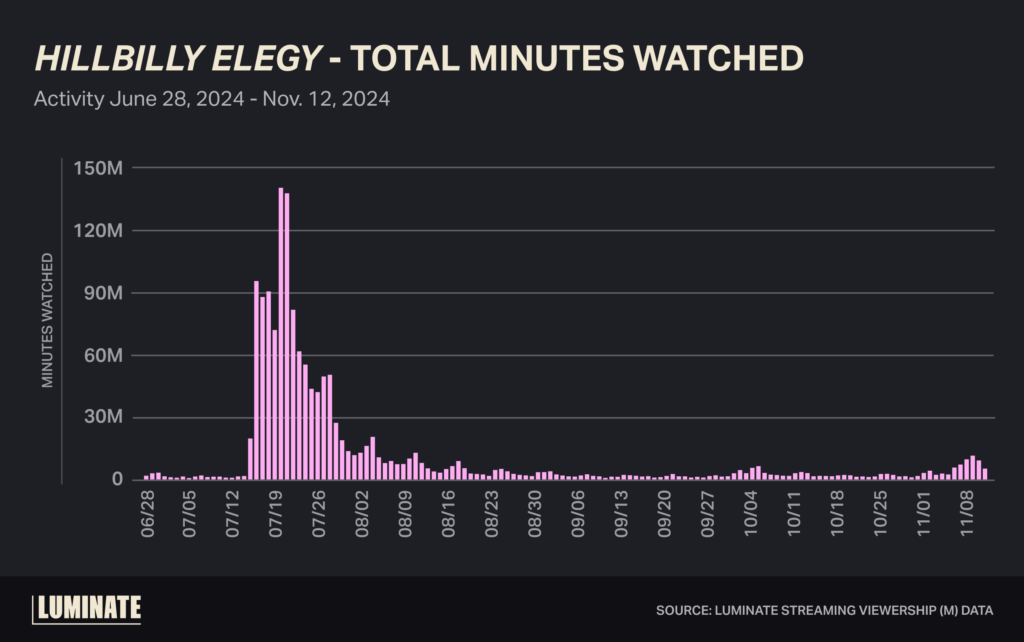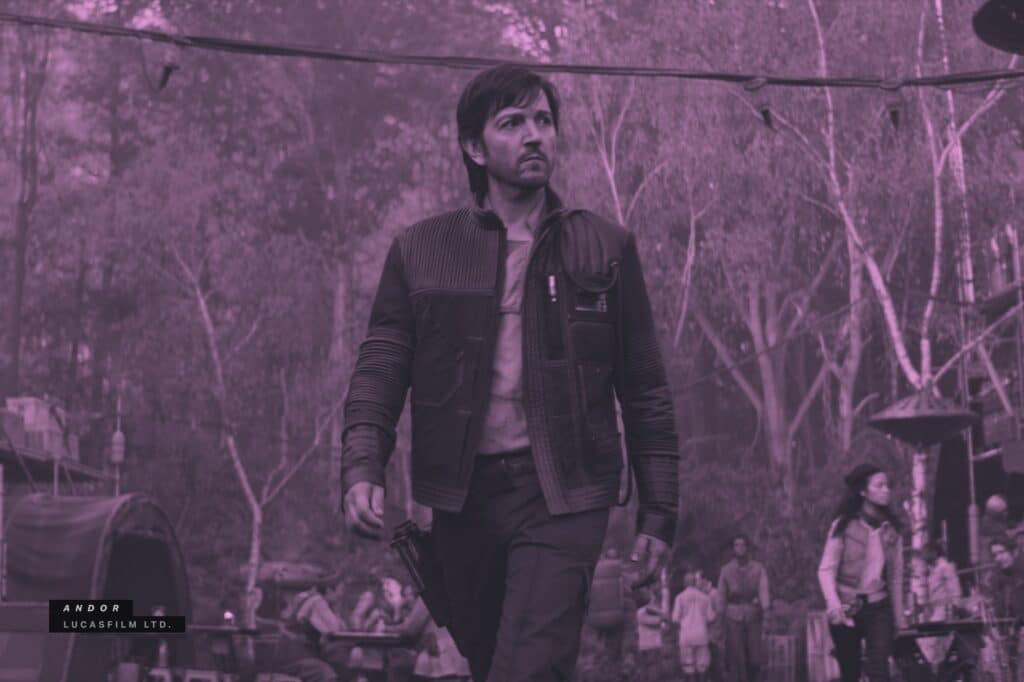In the wake of the presidential election, Luminate spotlights some recent trends surrounding Ron Howard’s 2020 biopic Hillbilly Elegy, based on the autobiography of Vice President-elect JD Vance. The Netflix original film debuted on November 24, 2020, with a limited theatrical run before releasing wide onto Netflix. The film received mixed reviews, but did chart on Netflix’s Top 10 Movies for a full week before picking up two Academy Award nominations (for Makeup and Hairstyling and Glenn Close’s supporting role). Following the high viewership from its initial streaming release, the film lay dormant for a few years, averaging between 30 and 50 thousand views per week…until recent months.
Per Luminate’s Streaming Viewership (M), which has been tracking streaming viewership since January 2022, Hillbilly Elegy enjoyed a massive increase in viewership beginning on July 15, 2024, when Donald Trump’s campaign announced Vance’s Vice Presidency nomination. Hillbilly Elegy’s viewership soared in the days following Vance’s VP nom, rallying even higher in the days following his RNC speech. At its peak, the film reached No. 2 in Luminate’s Top 50 Movies chart and spent a full month in the Top 10.

Following this bullish trend, viewership returned to its new normal the rest of the summer. In the first week of October, Hillbilly Elegy’s daily viewership nearly doubled, coinciding with the VP debate on the first of the month. A month later, Vance’s transition to Vice President-elect initiated another increase in engagement for the film, wrangling nearly 100,000 daily views since election day and returning to No. 15 in Luminate’s Top 50 Movies. As we look ahead to Inauguration Day, policy and cabinet announcements will only continue to keep Vance in the public eye. This attention is certain to trickle down to Hillbilly Elegy, as more people seek out the personal background of the nation’s new second-in-command.

This visualization highlights the intricate influence that media and current events can have on one another. Vance’s nomination led to increased engagement on the film as demonstrated above.
